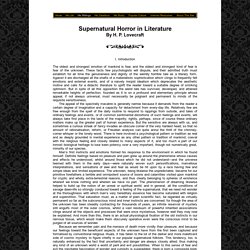

Writing a Synopsis from the Ground Up. Writing a Synopsis from the Ground Up by Dee-Ann Latona LeBlanc Return to Getting Your Book Published · Print/Mobile-Friendly Version Tell most aspiring novelists that they must synopsize their masterpiece, and they run screaming into the hills.

Give them a few weeks, then, to calm down and read everything they can get their hands on about synopses and... well, they break down and head off screaming again. Materials on writing a novel synopsis are often conflicting, especially when it comes to length, and for some of us a word or page limit is the only way we know to stop writing. A synopsis should be a breakdown of the central plot and storyline, and introduce the central characters. So how do you avoid this? A One-Sentence Summary Clinic.
One of the most popular features that I do on this blog is to periodically hold a clinic in writing a one-sentence summary.

It’s time to do it again. I think we’ll have a lot of fun. Simply put, the one-sentence summary is one of the most effective marketing tools you’ll ever find for your novel. Not to mention, it’s one of the most powerful ways of keeping you on track as you write or edit your novel. What’s a one-sentence summary? Here are a couple of examples which I’m going to steal from my book WRITING FICTION FOR DUMMIES. OUTLANDER, by Diana Gabaldon: “A young English nurse searches for the way back home after time-traveling from 1945 to 1743 Scotland.” THE KITE RUNNER, by Khaled Hosseini: “A boy raised in Afghanistan grows up with the shame of having failed to fight the gang of boys who raped his closest friend.” One thing a one-sentence summary does is to tell you instantly whether you’d be interested in reading the book. Back to Basics: Writing a Novel Synopsis. Photo by reamyde / Flickr Note from Jane: The following post is an old favorite; I’ve updated it to be more specific and useful.

It’s probably the single most despised document you might be asked to prepare: the synopsis. The synopsis is sometimes required because an agent or publisher wants to see, from beginning to end, what happens in your story. Thus, the synopsis must convey a book’s entire narrative arc. It shows what happens and who changes, and it has to reveal the ending. Don’t confuse the synopsis with sales copy—the kind of material that might appear on your back cover or in an Amazon description. Unfortunately, there is no single “right” way to write a synopsis.
While this post is geared toward writers of fiction, the same principles can be applied to memoir and other narrative nonfiction works.
Character Development. Point of view. Tips. Plot. Setting. Tools. Writing Exercises. Novel Writing Online. Young Adult Fiction Writer. Situational Irony: Definition & Examples. "Supernatural Horror in Literature" by H. P. Lovecraft. I.

Introduction The oldest and strongest emotion of mankind is fear, and the oldest and strongest kind of fear is fear of the unknown. These facts few psychologists will dispute, and their admitted truth must establish for all time the genuineness and dignity of the weirdly horrible tale as a literary form. Against it are discharged all the shafts of a materialistic sophistication which clings to frequently felt emotions and external events, and of a naively insipid idealism which deprecates the aesthetic motive and calls for a didactic literature to uplift the reader toward a suitable degree of smirking optimism. But in spite of all this opposition the weird tale has survived, developed, and attained remarkable heights of perfection; founded as it is on a profound and elementary principle whose appeal, if not always universal, must necessarily be poignant and permanent to minds of the requisite sensitiveness.
II. III. Mrs. Of Mrs. IV. V. ‘Based on a true story’: the fine line between fact and fiction. Frontiers are always changing, advancing.

Borders are fixed, man-made, squabbled about and jealously fought over. The frontier is an exciting, demanding – and frequently lawless – place to be. Borders are policed, often tense; if they become too porous then they’re not doing the job for which they were intended. Occasionally, though, the border is the frontier. That’s the situation now with regard to fiction and nonfiction. For many years this was a peaceful, uncontested and pretty deserted space. While it’s important not to convert prejudices into manifesto pledges, my experience is in keeping with actuarial norms: middle-aged now, I look forward to the days when I join that gruffly contented portion of the male population that reads only military history. As a consequence, the one thing I don’t go to fiction for, these days, is entertainment. So You Wrote a First Draft—Dear God! What NOW? Once we have that crappy first draft usually there will be two major things we need to do…fill or cut.

Okay, drinking makes three. And maybe wondering why we didn’t go to dental hygienist school instead makes four…. Anyway. While it is true that too little substance can generate confusion, too much fluff can create distraction.